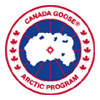
Healthy eating is important for everyone. Fuelling with nutritious food ensures that you get the energy, vitamins and minerals that your body needs for physical activity and overall health.
The benefits of healthy eating:
- Energy for physical and daily activity.
- Improved focus and concentration.
- Building strong bones.
- Helping muscles to recover and repair.
- Providing nutrients for healthy skin and hair.
- Building a strong immune system to help fight illness and infections.
- Lowering the risk of developing high blood pressure, high cholesterol, or high blood sugar levels.
Healthy Habit Ideas
Listed below are some tips to help you start making healthier food choices. It takes time to develop new habits, so choose one or two tips at a time and stick with them until they become a normal part of your daily life.
-
Have a serving of fruit or vegetables at each meal or snack. Here are a few tasty ideas:
- Berries stirred in yogurt
- Top a slice of whole grain bread with peanut butter and sliced banana
- Apple slices dipped in peanut /almond butter or yogurt
- Raw veggies with your favourite dip like hummus (A great source of protein!)
- Limit juice to no more than 1/2 cup per day. Even though it contains Vitamin C, juice is low in fiber and high in simple sugars. Choose whole fruit instead!
-
Fruit and Veggies taste great! Don't agree? Challenge yourself to try a new one each week and you'll be surprised at the variety of delicious flavors. (Remember, just like forming any habit, it may take multiple times trying a new food before your taste buds get used to it. Don't give up after your first bite!)
Quick Tips!
Be careful of packaging that claims a food item is made out of real fruit or vegetables. Just because "fruit" or "vegetable" is in the name does not mean it is a real source of fruit or vegetables. If it does not come from the ground or grow on a tree- it's not a fruit or a vegetable! -
Choose 100% whole grains, which provide more fiber than refined grain products. This includes breads, crackers, cereals, pastas, and rice.
Quick Tips!
"Made with whole grains" or a "high source of fiber" does not always mean the food is 100% whole grain. Look at the ingredients list to see if 100% whole grain flour is listed as the first ingredient. "Enriched flour" is white flour not 100% whole grain flour.Quick Tips!
Be wary of products that have cartoon characters on the box or package. They are targeting young kids and are often high in sugar, salt and the unhealthy types of fat (saturated and trans). - Drink 1-2 cups of lower fat milk (skim or 1%) every day for a good source of calcium and Vitamin D. If you drink soy milk or another form of non-dairy milk, make sure it is fortified with Vitamin D.
-
Limit processed meats such as bacon, bologna, hot dogs, salami, or pepperoni to a very rare occasion. They are very high in sodium, nitrates and other chemicals.
Quick Tips!
Not sure what animal or what part of the animal the meat comes from? Then don't eat it! Think about a chicken breast versus a hot dog. - Have a serving of fish 1-2 times a week for the healthy omega-3 fats.
-
Have a meatless meal once or twice a week. We can get protein from more than meat. Try:
- Eggs
- Nuts and seeds
- Peanut or nut butters
- Beans and lentils
- Tofu
-
Carry a reusable water bottle so that you can drink water often throughout the day. It is the best way to quench your thirst!
Beverage Facts - Sports drinks are only required when you are sick with the stomach flu or when you are exercising continuously at a high intensity for over 60 to 90 minutes.
- Save soft drinks and other sugar sweetened beverages for a rare occasion. A can of regular soft drink can contain over 10 teaspoons of sugar.
- Energy drinks are NOT appropriate for kids. They contain high doses of caffeine and other stimulants, which are not safe for children and youth. These drinks can impair sleep and concentration.
-
Limit your trips to fast food restaurants to once per week or less. Most fast food meals are:
- high in salt, sugar, saturated and trans fat
- low in fiber, fruit, vegetables, minerals and vitamins
A Sample Healthy Day
Here is an example of what a nutritious day could look like. Everybody is different and there is no one size fits all eating plan. Below is an example of how to put together balanced meals and snacks which includes a combination of different food groups.
A sample healthy day:
| Example 1 | Example 2 | |
|---|---|---|
| Breakfast | Bowl of whole grain cereal with berries, topped with slivered almonds and milk/soy milk | Two slices of whole grain bread with 1-2 eggs Orange Glass of milk/soy milk |
| Snack (if hungry) | Yogurt with berries | Veggies with dip such as peanut butter or hummus |
| Lunch | Wholegrain turkey sandwich topped with mustard, spinach, tomato and cheese Fruit Garden salad |
Vegetable soup with a wholegrain roll Veggie sticks with hummus Fruit Glass of milk/soy milk |
| Snack (if hungry) | Piece of fruit and ¼ cup of unsalted nuts |
Homemade trail mix
|
| Supper | Salmon, baked potato, with a side of carrots and peas (or any two vegetables of choice) Glass of milk/soy milk |
Vegetable stir-fry with nuts served over brown rice. Glass of milk/soy milk |
Fuelling your Runs!
The food and fluids you consume has a direct impact on your body's ability to train and perform at its best. In the early stages of learning how to run or if you are running 2-3 times a week, you may not need to eat more food, but it certainly means you need to choose quality food and fluids.
Carbohydrates
Carbohydrates supply your body with energy by breaking down into glucose which fuels the brain and muscles. Carbohydrates are the muscles preferred source of fuel for high intensity exercise.
Food sources of carbohydrates:
There are two different types of carbohydrates, simple and complex.
| Simple Carbohydrates | Complex Carbohydrates |
|---|---|
| Provides a quick burst of energy | Provides longer lasting energy Choose most often! |
|
Table sugar Honey Molasses Syrup Candy Jams Juices Pop Sports drinks |
Fruit Vegetables Bread* Cereal* Rice* Pasta* Yogurt Beans and lentils (also source of protein) |
*Choose whole grain options of complex carbohydrates. The fibre content helps to keep you feeling satisfied and provides longer lasting energy.
When should I eat carbohydrate based foods?
Choose carbohydrate based foods before you workout to make sure that your muscles are stocked with fuel. Generally you want to give your body 1-2 hours to digest a snack or light meal and 3-4 hours to digest a larger meal.
Meal and Snack Ideas
3-4 hours before:
- Homemade whole grain bagel sandwich (whole grain bagel, egg, slice of lower fat cheese) with a piece of fruit, water
- Oatmeal with sliced banana and berries and melt in tbsp of peanut butter, milk
- Whole grain wrap with vegetables and lean meat/beans with fruit and yogurt on the side
- Whole grain pasta with tomato sauce, whole grain bun and a side salad
1-2 hours: snack or blender/liquid meal
- Yogurt topped with berries and whole grain cereal
- 1 slice of whole grain toast with peanut butter and jam
- Apple slices with peanut butter
- Homemade fruit smoothie (blend together fruit, yogurt, and ice)
Protein
Protein based foods are used by muscles for repair and recovery. Protein is made of amino acids, which are the building blocks of muscles. When you perform intense exercise or a new exercise, you often cause damage to your muscles. This is why you often feel stiff and sore the next day. This is a good thing! Your muscles get stronger under stress (through training) but need the amino acids found in protein rich foods to repair the damage and support muscle growth.
Individuals who are very active and exercise at a high intensity may need to eat a little more protein. Talk to a Registered Dietitian who can help make sure you are meeting your needs.
Food sources of protein:
It is fairly easy to meet our protein needs by choosing a variety of food-based protein sources. Most of us do not require expensive protein supplements. The table below includes serving sizes based on Canada's Food Guide.
| Sources of Protein | Serving Size |
|---|---|
| Beef (chose lean ground beef) | 2.5 oz |
| Fish (salmon, tuna, cod etc.) | 2.5 oz |
| Chicken | 2.5 oz |
| Peanut butter (other nut butters) | 2 tbsp |
| Nuts and seeds | 1/4 cup |
| Beans and lentils | 3/4 cup |
| Eggs (complete protein-contains all the amino acids) | 2 eggs |
| Tofu | 3/4 cup |
| Yogurt | 3/4 cup |
| Milk | 1 cup |
| Cheese | 1.5 oz |
When do I eat protein based foods?
Protein rich foods can help your muscles repair and recover after training. Try to consume a snack or meal that combines carbohydrates, protein and fluids which will help refuel and repair your muscles for your next workout.
Post workout meal ideas
- Turkey sandwich on whole grain bread with raw veggies and yogurt on the side
- 1-2 eggs, 2 slices whole grain toast, piece of fruit, water
- Vegetarian chilli with whole grain bun, milk
- Salmon, whole grain rice, two types of vegetables, milk
- Whole grain crackers and raw veggies served with hummus
Hydration
Food isn't the only essential fuel! Being hydrated before a run is very important, especially if exercising in hot and humid temperatures. When we exercise, our body produces heat and the only way our body can cool down is to sweat. As the sweat evaporates, our body temperature returns to normal, but at the same time we are losing water. Dehydration will have a negative impact on running and has been linked to muscle cramping.
Tips for hydration:
- Sip on water throughout the day so you start your run hydrated.
- If it is really warm out, bring water, especially if you are out for more than 40 minutes.
- After the run, drink water, to replace any fluids you have lost.
Do I need to use Sports Drinks?
Sports drinks are not necessary for everyone. Sports drinks are designed for endurance athletes who are working out at high intensities for more than 60- 90 minutes. A sports drink can also be helpful for individuals who sweat a lot or are training in very warm temperatures. Generally plain water is fine.
How much should I drink?
There is no "one size fits all" guideline because we are all unique. You should try to sip on fluids throughout the day so that you start training hydrated. One indicator of hydration is the colour of urine. Darker yellow usually means you are not hydrated and pale yellow means your body is more hydrated. Generally, you should be urinating every 2-4 hours.








